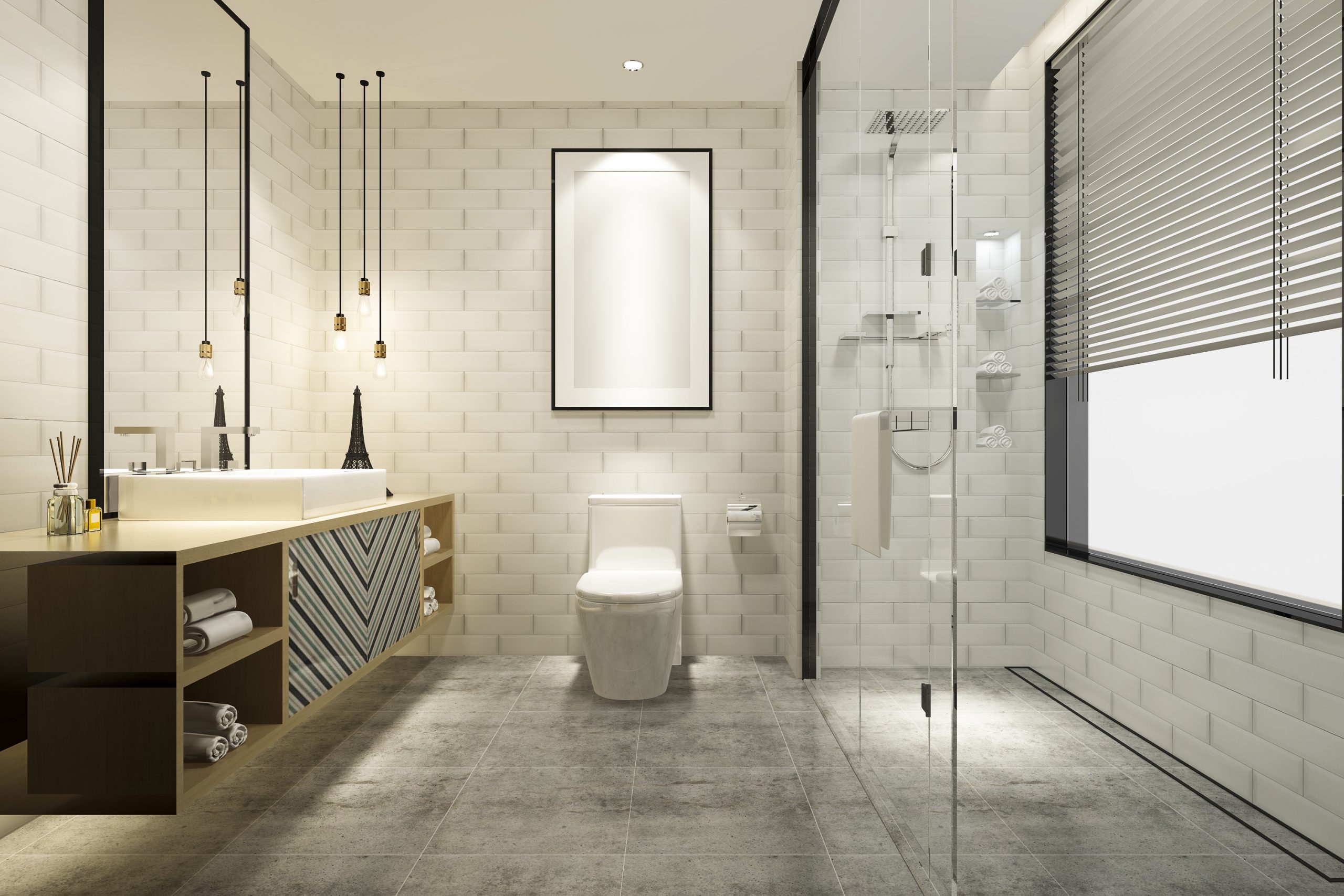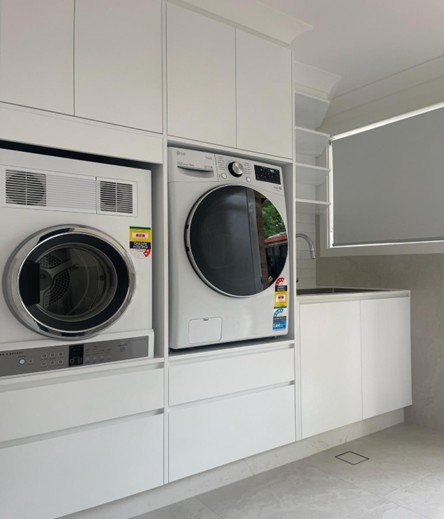
Laundry Renovation Mistakes to Avoid

Poor planning in laundry renovations often leads to wasted space, inefficient workflows, and long-term frustration. Many homeowners overlook practical essentials in favour of aesthetics. Clearview Renovations focuses on addressing these common design errors with smart, functional solutions tailored to each home. From layout to materials, every choice matters. Avoiding early mistakes can transform your laundry into a streamlined, durable, and valuable part of your home.
Key Takeaways
- Always plan the layout before the aesthetics.
- Ventilation isn’t optional; it’s essential.
- Don’t underestimate storage needs.
- Choose durable, moisture-resistant materials.
- Professional guidance prevents costly errors.
Why Laundry Renovations Go Wrong
The laundry is one of the most heavily used yet underrated spaces in a home. It needs to handle moisture, movement, storage, and functionality, without feeling cramped or outdated.
Unfortunately, many homeowners overlook key design principles in favour of style trends or budget shortcuts. A well-designed laundry should high function like a mini utility hub, not just a room with a washer and dryer.
At Clearview Renovations, we focus on making laundry spaces practical, durable, and tailored to everyday use.
Common Design and Planning Mistakes to Avoid
The laundry room is one of the most frequently used yet often overlooked spaces in a home. When designed well, it can be a functional, efficient, and even enjoyable area that supports daily routines. However, when it comes to renovating this space, many homeowners make avoidable mistakes, especially in the design and planning phases.
A poorly designed laundry can quickly turn into a frustrating, cluttered, and inefficient space. To help you make the most of your renovation and avoid costly do-overs, here are some of the most common laundry renovation mistakes and how to avoid them.
1. Failing to Plan for Workflow
- Mistake: One of the biggest issues in laundry design is poor workflow. Many homeowners overlook how they will move through the space when loading, washing, drying, folding, and storing laundry.
- Avoid it: Think of your laundry in terms of zones, washing, drying, folding, ironing, and storage. Arrange your appliances and surfaces so you can move through these tasks in a logical, ergonomic way. Keep hampers, benches, and hanging rails within easy reach of machines.
2. Ignoring Ventilation Needs
- Mistake: Laundries generate a lot of moisture and heat. Failing to include proper ventilation can lead to mould, dampness, and even damage to cabinetry and walls.
- Avoid it: Always include a window, exhaust fan, or vented dryer system in your design. Good ventilation keeps air moving and prevents moisture buildup. If space is tight or enclosed, consider installing a combination of an extractor fan and a dehumidifier.
3. Poor Lighting Choices
- Mistake: Lighting is often an afterthought in laundry renovations. Dim or shadowy lighting can make the space unpleasant to use and hard to clean or organise.
- Avoid it: Invest in good overhead lighting and consider under-cabinet lights or task lighting over benches and sinks. Natural light is a bonus, so make use of windows where possible.
4. Choosing Style Over Function
- Mistake: While it’s tempting to prioritise sleek finishes or Instagram-worthy styling, some laundry renovations sacrifice practicality for looks.
- Avoid it: Choose durable materials that withstand moisture, chemicals, and wear. Function and style for laundry room makeovers go hand in hand, benchtops should be water-resistant, and cabinetry should be made from materials that won’t warp over time. Always test design choices against real-life usage.
5. Not Maximising Storage
- Mistake: Laundries often suffer from clutter due to a lack of storage. Many renovations fail to include enough cabinetry, shelves, or concealed compartments.
- Avoid it: Use vertical space with overhead cabinets or tall cupboards. Include drawers, pull-out hampers, or hidden ironing boards to keep surfaces clear. Custom cabinetry can make the most of small or awkward spaces.
6. Incorrect Appliance Placement
- Mistake: Installing washers and dryers in the wrong configuration, like placing a front loader too low without a riser, can make the space hard to use and inefficient.
- Avoid it: Plan appliance placement for convenience and safety. Stack machines only if your space allows and your floor can support the weight. Leave enough clearance for doors and include a benchtop above appliances for folding or storage.
7. Overlooking Plumbing and Electrical Needs
- Mistake: Not considering existing plumbing and power points can increase renovation costs and lead to layout compromises.
- Avoid it: Consult a licensed plumber and electrician early in the design process. Relocating services are possible but can be expensive, especially in older homes. Where feasible, plan your layout around existing service points to save time and money.
8. Forgetting About Soundproofing
- Mistake: Washing machines and dryers can be noisy, especially if your laundry is near living or sleeping areas. Poor sound insulation can disrupt the rest of your home.
- Avoid it: Install soundproofing materials like acoustic doors, insulated walls, or rubber mats under appliances. Choose quieter machines if noise is a concern.
9. Inadequate Bench Space
- Mistake: Many homeowners underestimate the value of bench space in the laundry. Without it, folding clothes, sorting washing, or placing items temporarily becomes difficult.
- Avoid it: Aim to include a continuous benchtop above appliances or between cabinetry. Even a small folding station can dramatically increase your laundry’s usability.
10. Not Future-Proofing the Design
- Mistake: Renovating without considering how your laundry needs may change in the future, whether it’s adding more household members, different appliances, or evolving storage needs.
- Avoid it: Design with flexibility in mind. Allow for adjustable shelving, space for larger appliances, and extra outlets. A thoughtful, forward-looking design will save you from needing another renovation too soon.
Bonus Tip: Treating the Laundry as an Afterthought
- Mistake: Because laundries are utilitarian, they’re often the last priority in a renovation budget, leading to rushed designs and compromises.
- Avoid it: Treat the laundry as an integral part of your home. A well-designed laundry not only improves functionality but can add value to your property. Budget for quality where it matters most: storage, layout, and right durable eco friendly materials.
The Clearview Renovations Approach
We don’t just renovate, we rethink how your space functions. Our laundry renovations service is built around delivering thoughtful, long-lasting improvements. From consultation through to project completion, we focus on:
- Functional layout design
- Quality construction and materials
- Custom solutions for your specific household
- Honest timelines and clear communication
We’ve transformed everything from tight laundries in inner-city homes to large family utility rooms in Brisbane’s outer suburbs.
Conclusion
A successful laundry renovation isn’t just about tiles and taps, it’s about how the space works when it’s under pressure. Avoiding these common planning mistakes is the first step toward a room that adds lasting value and real daily function. If you’re ready to design a laundry that works for your lifestyle, contact us today for a consultation. Our team brings smart design and quality craftsmanship to every project.
FAQs:
What should I consider first when renovating a laundry?
Start with the layout. A clear plan for appliance positioning, access, and flow ensures functionality before design decisions are made.
How much ventilation does a laundry need?
Proper ventilation is essential. You should have either a ducted exhaust fan or operable windows to manage moisture and reduce the risk of mould.
What flooring is best for laundry rooms?
Slip-resistant, water-resistant flooring like vinyl or porcelain tiles is ideal. These materials handle spills and wear without damage.
Can I combine the laundry with another space?
Yes, laundries are often combined with bathrooms, mudrooms, or kitchens. Just be sure to define each function clearly in the design phase.
How do I get more storage in a small laundry?
Use vertical space with overhead cabinets, install built-in hampers, and choose pull-out storage options to maximise every centimetre.
Does Clearview Renovations offer custom laundry designs?
Yes. We create tailored laundry renovations that reflect your space, needs, and lifestyle, all built with premium craftsmanship.
- Category :
- Type :
